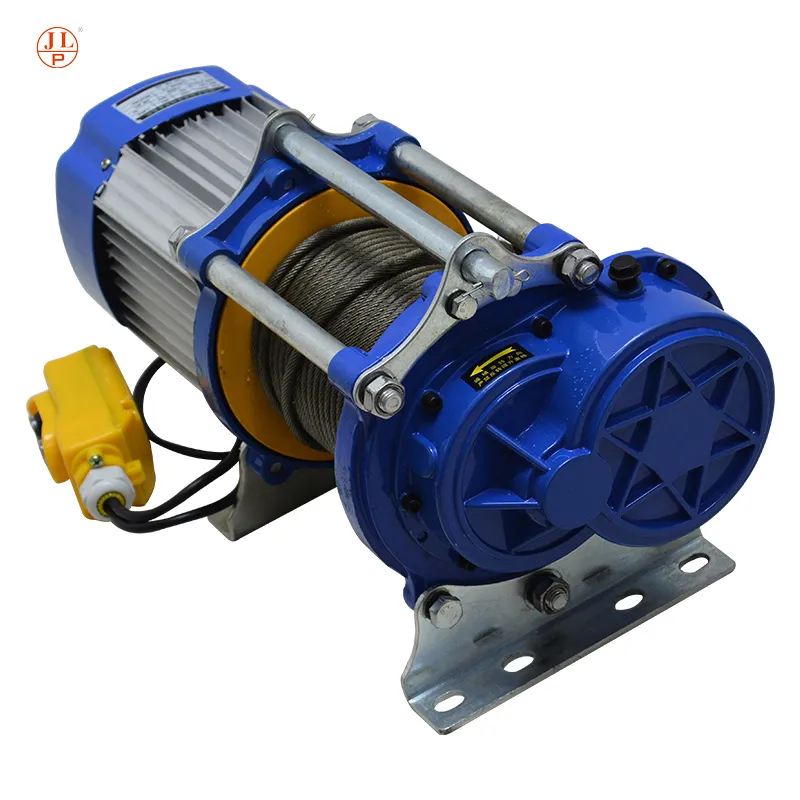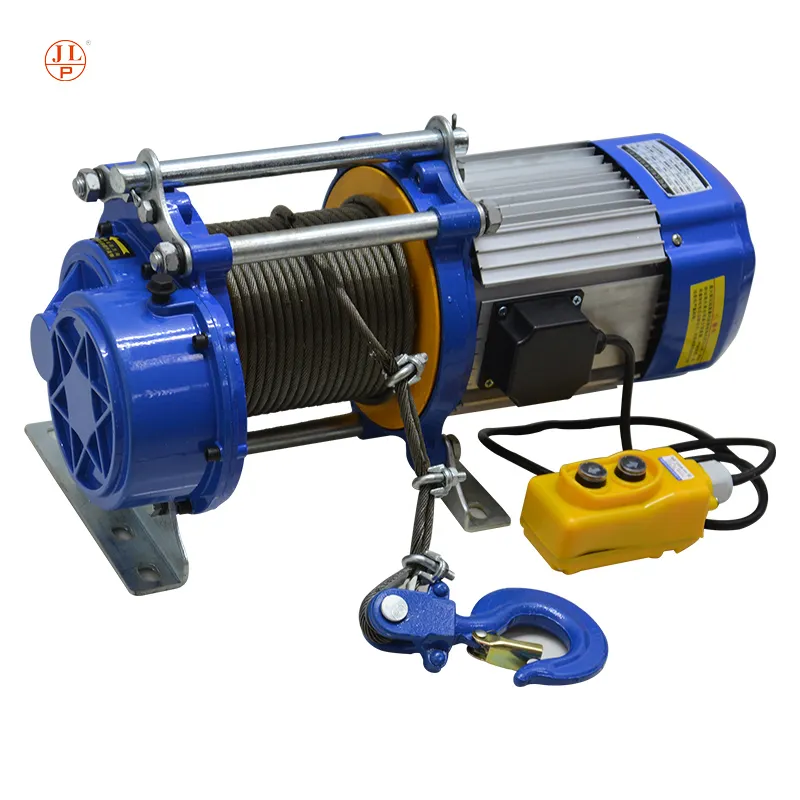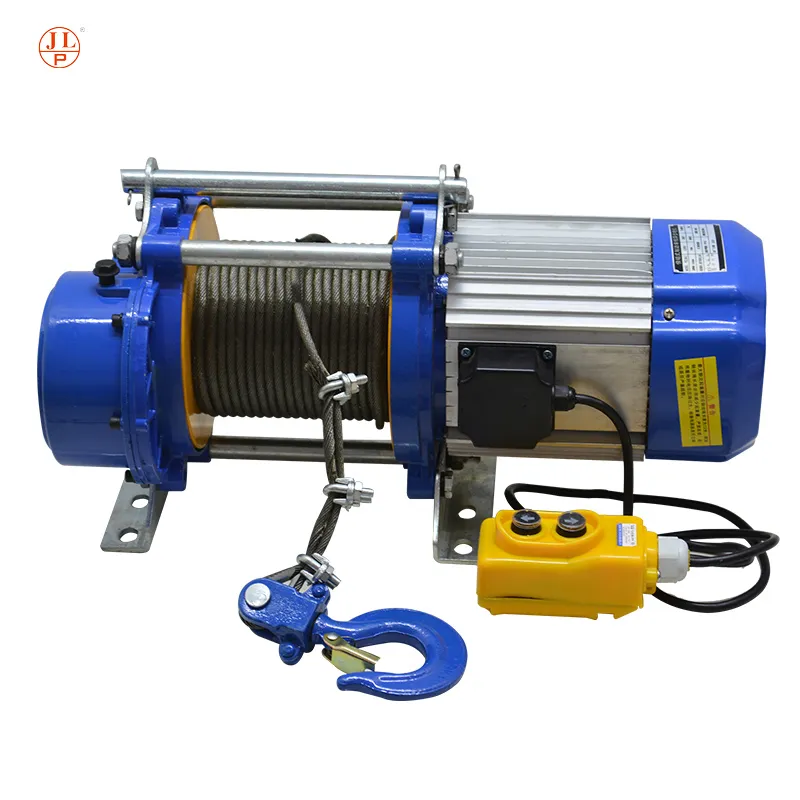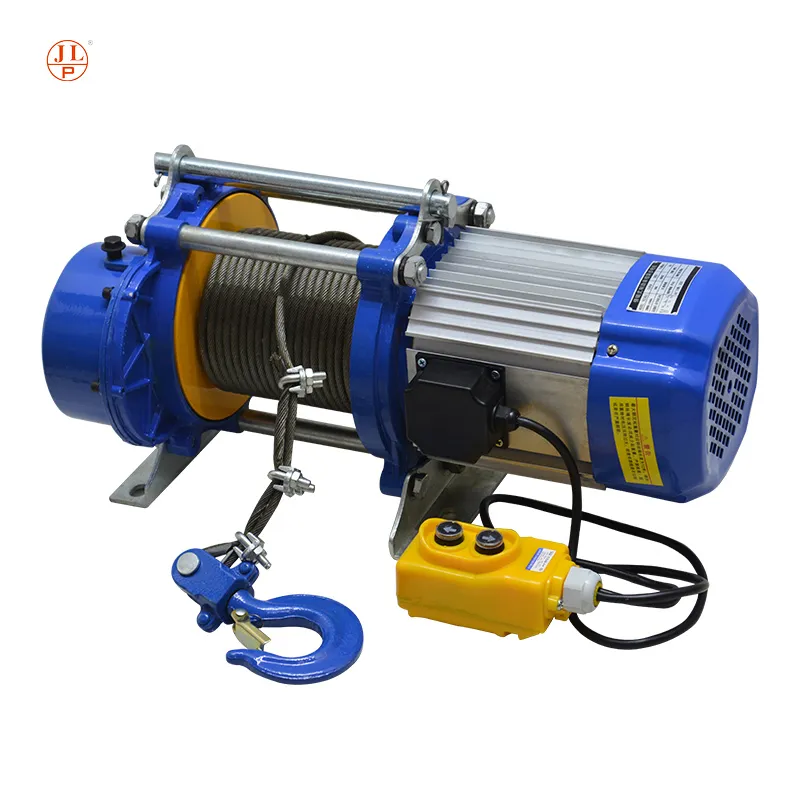


If you work around lifting gear daily, you know the real story lives between datasheets and the jobsite. When teams ask me about a variable speed electric hoist, I usually start with practicalities: control finesse, duty class, and how kindly it treats the load and rigging over time.

The Fixed Type JPL‑K1 Electric Hoist is built in Donglv Industrial Zone, Donglu Township, Qingyuan District, Baoding City, Hebei. Capacity spans 500–1500 kg with lifting heights roughly 30–100 m. Shell is aluminum alloy; motor windings are pure copper. You can run single-line or double-line hook reeving, and power options are 220 V or 380 V. Color? Change it—no drama. For teams chasing finer placement control, variable-speed operation is commonly implemented via an inverter (VFD) package on request.
| Spec | JPL‑K1 (overview) |
|---|---|
| Rated Capacity | 500–1500 kg |
| Lifting Height | ≈30–100 m (real-world use may vary) |
| Power Supply | 220 V or 380 V |
| Hook / Reeving | Single-line or double-line hook |
| Housing Material | Aluminum alloy |
| Motor Windings | Pure copper |
| Speed Control | Single/dual-speed standard; variable-speed via optional VFD |
| Finish | Color customizable |

Trends are obvious: more frequency inverters, better load-sway control, and gentler starts that protect gearboxes and ropes. A variable speed electric hoist lets crews inch glass panels, turbines, or machine tools into place without the “snap” you get from abrupt starts. Many customers say they see fewer reworks and less operator fatigue—honestly, that tracks with what I’ve seen on site.
Materials: aluminum alloy shell for weight-to-strength, copper windings for thermal performance. Typical build flow: CNC/drum prep → motor assembly → wiring/controls → proof and functional testing. Common benchmarks (industry-wide) include 125% static proof load and ≈110% dynamic test per EN 14492‑2 guidance, with motor verification against IEC 60034. Field feedback pegs service life at many years when duty class is matched correctly and reeving is kept within spec. I guess the boring part—regular lubrication and rope/chain inspections—still decides who gets a decade out of a hoist.

| Vendor/Model | Country | Speed Control | Certs (typ.) | Lead Time |
|---|---|---|---|---|
| JPL‑K1 (Qingyuan Juli) | China | Single/dual; VFD optional | ISO 9001, CE (project-based) | ≈2–6 weeks |
| KITO/ER2 (ref.) | Japan | Dual/variable | CE, UL (varies) | ≈4–10 weeks |
| STAHL/ST (ref.) | Germany | Variable via VFD | CE, ISO | ≈6–12 weeks |
| Demag/DC (ref.) | Germany | Variable | CE, ISO | ≈6–12 weeks |
Note: specs/prices vary by region and options; real-world lead times depend on custom colors, reeving, controls.
Beyond the obvious color and voltage, buyers often add radio remotes, overload limiters, travel limit switches, and, for variable speed electric hoist duty, VFDs with soft-start ramps and micro‑creep. Sensible additions: thermal protection, hour/cycle counters, and ingress protection aligned to site conditions.
Glass façade crew, 1 t at 60 m: switching to a variable speed electric hoist cut panel alignment time ≈18% (contractor’s logbook) and reduced re-lifts. Hydro plant MRO, 1.5 t service lifts: operators noted smoother starts, with measured pendulation dropping by “about a third” after VFD tuning.

References



